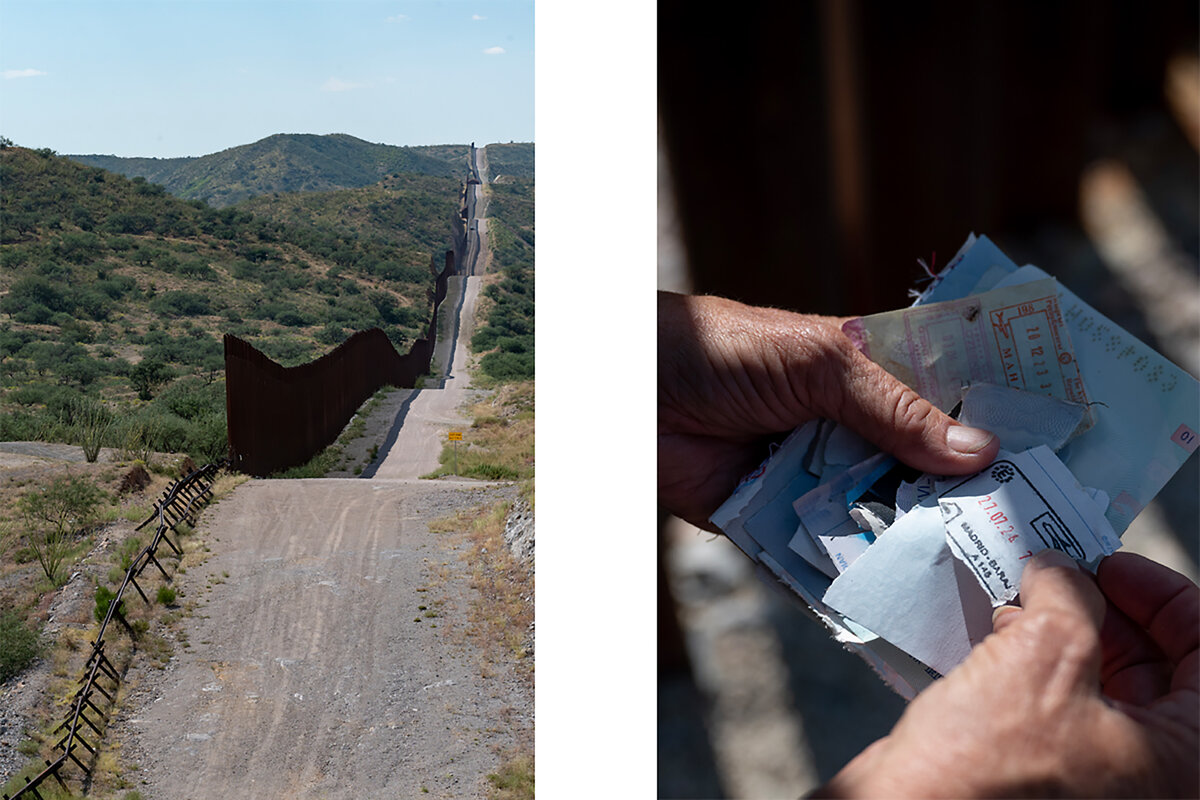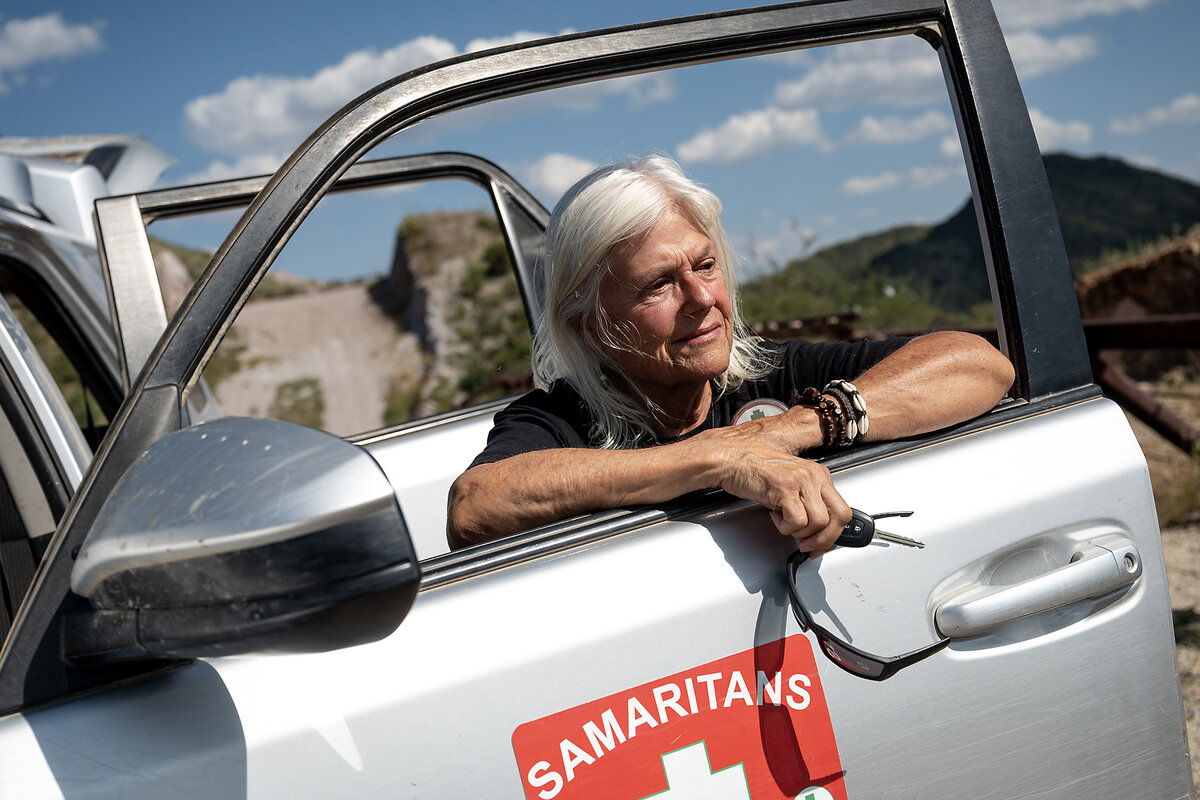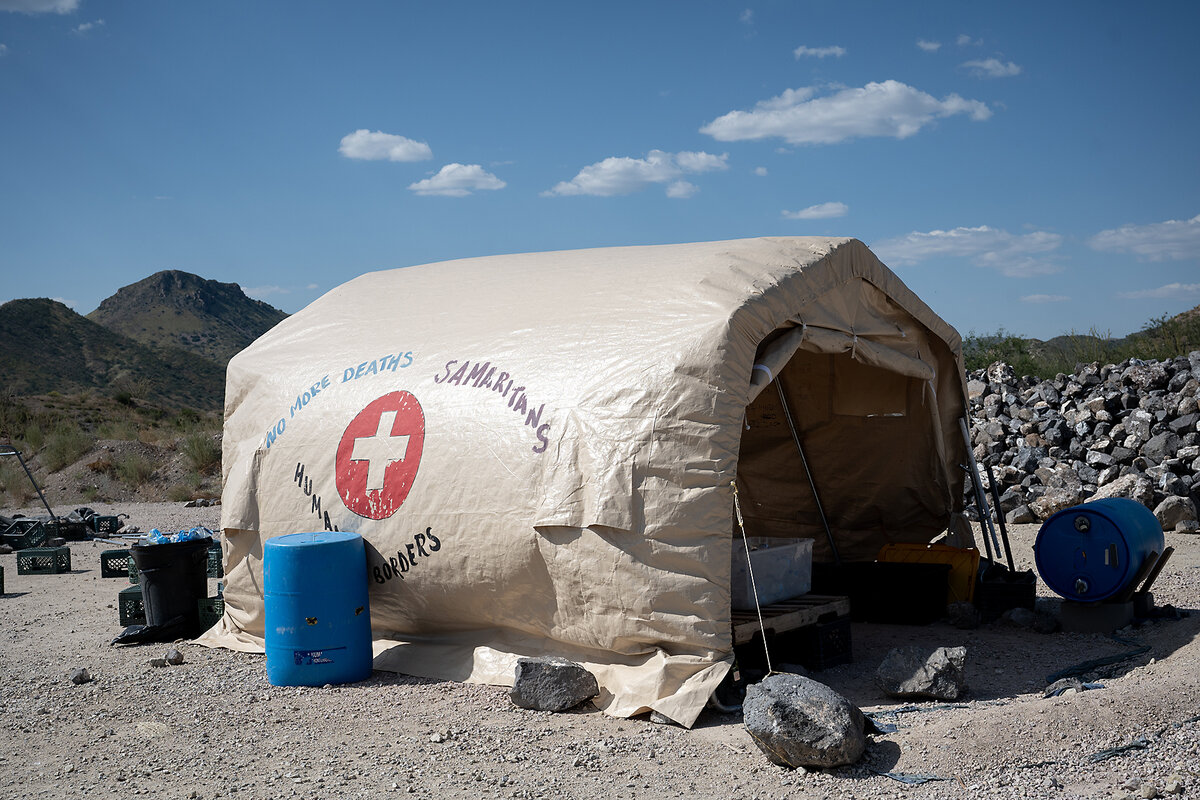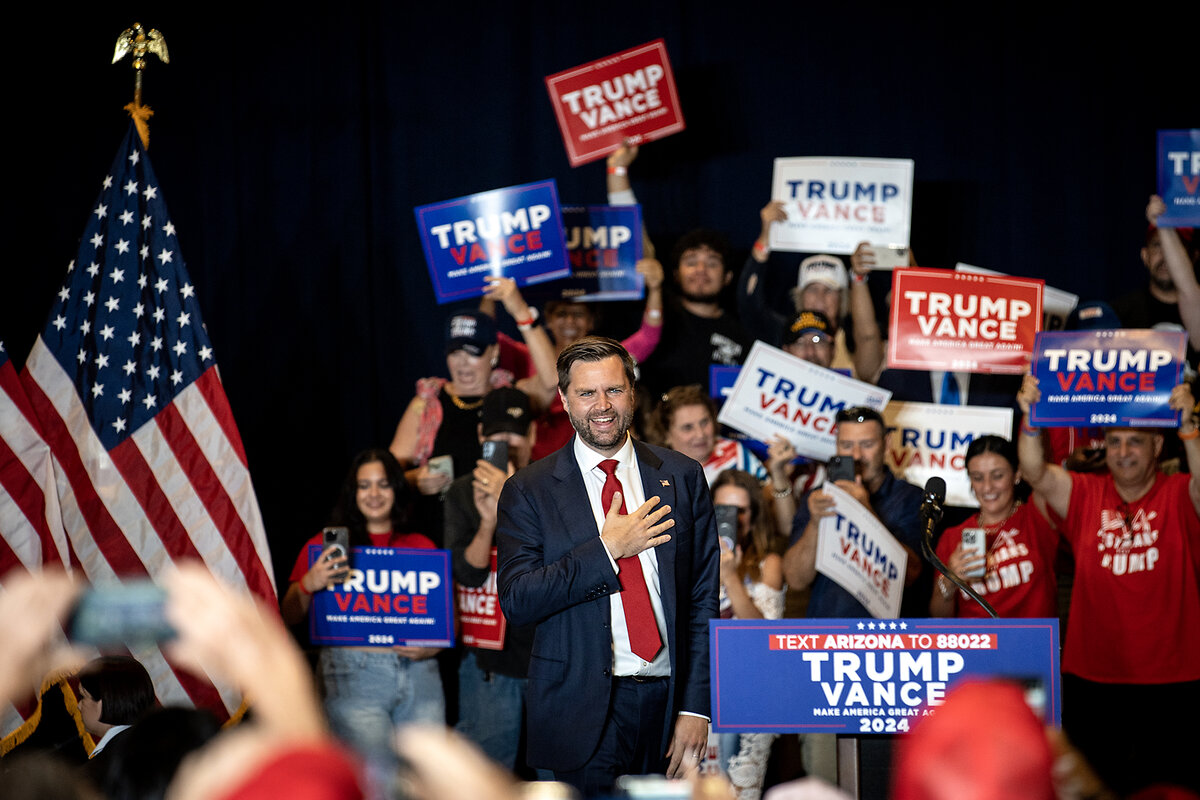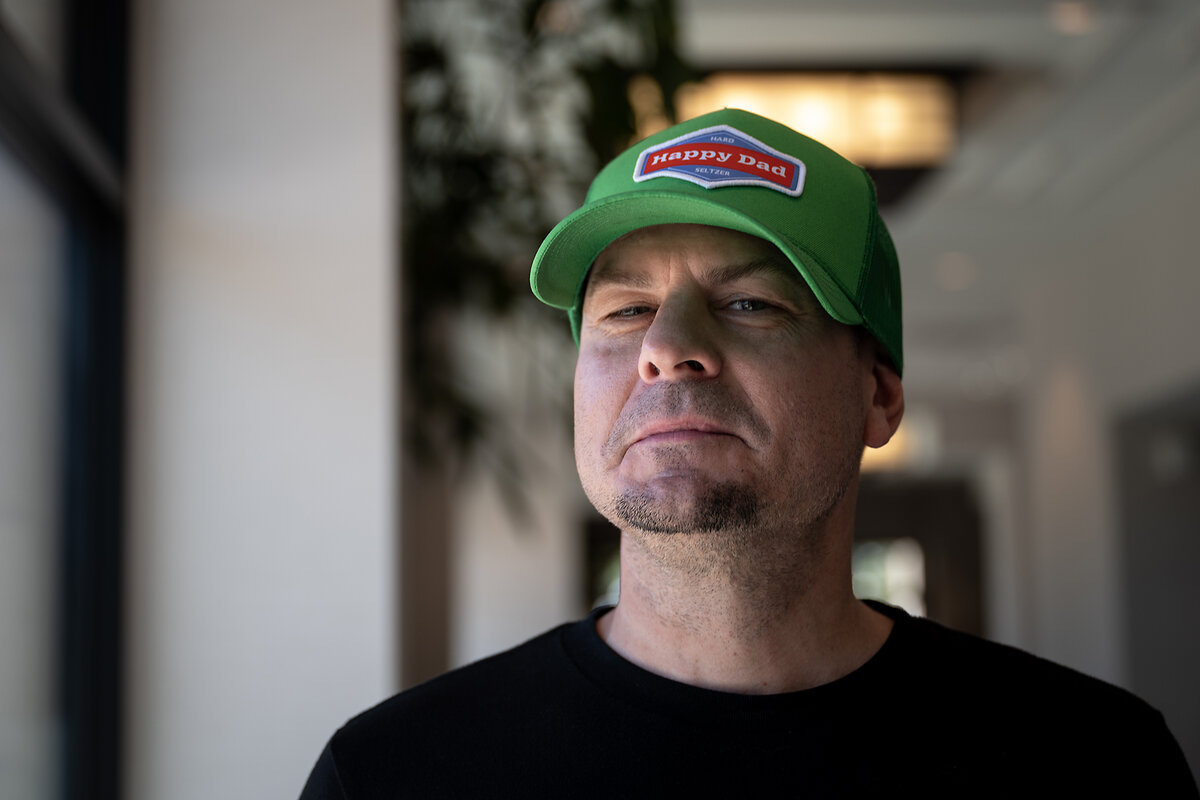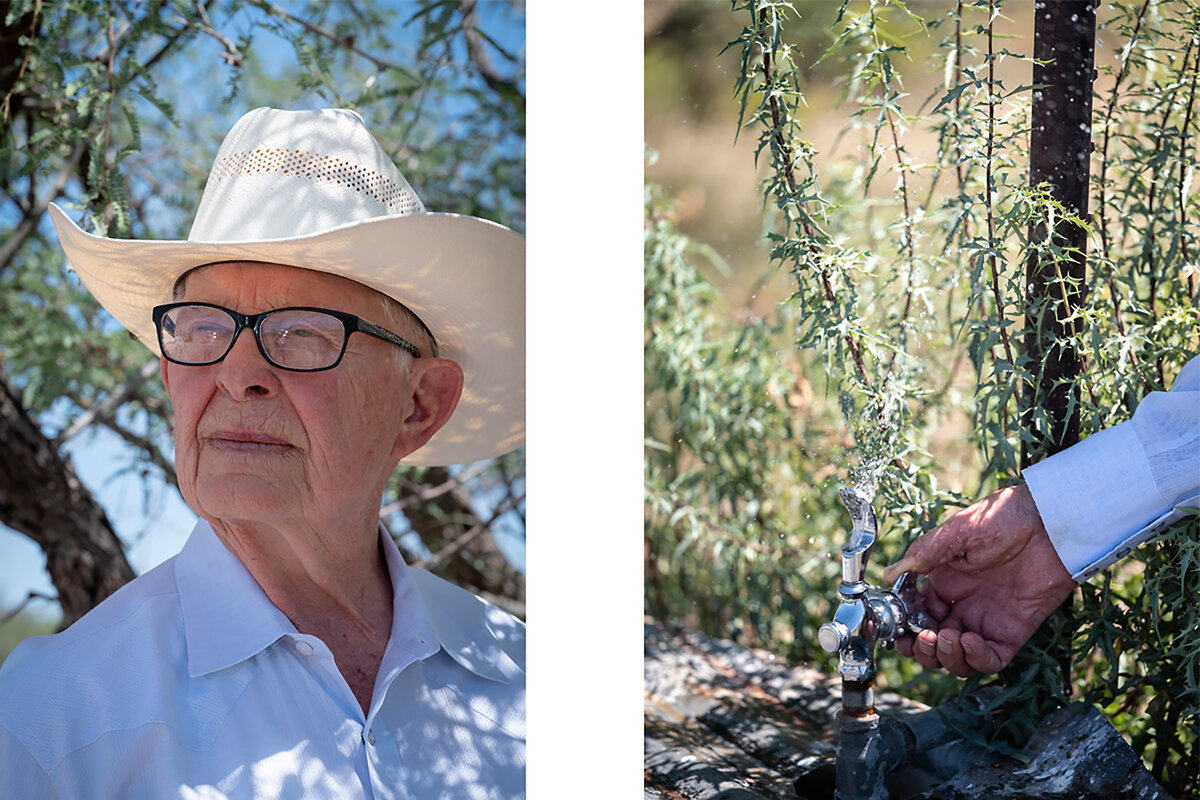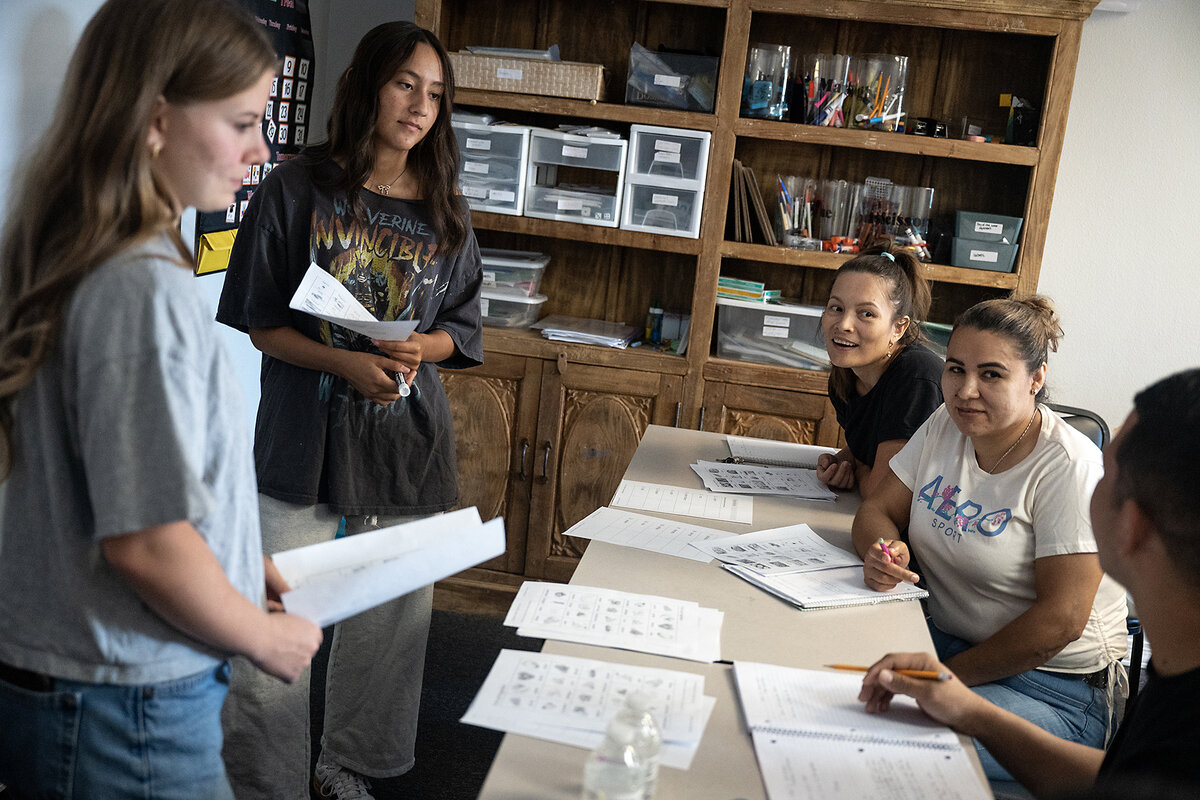In Arizona, voters want tighter borders. Will this issue swing the election?
Loading...
| ARIVACA, Ariz.
In the battleground state of Arizona, where the divisive issue of immigration is a top voter concern, rancher Jim Chilton and volunteer Gail Kocourek are political opposites. He’s for Donald Trump. She backs Kamala Harris.
The two are also friends. And the two are meeting at his cattle ranch before she sets out with a new volunteer to check out aid stations along the southern border.
Why We Wrote This
On Arizona’s southern border, there’s both public division and common ground over immigration. Part of a series on the issues that may tip key swing states: Georgia, Michigan, Nevada, North Carolina, Pennsylvania, and Wisconsin.
Peel away the politics of border security and immigration, and ideology submits to practicality in this border state – and across the United States. Trump and Harris supporters now align closely on improving security along the country’s borders, according to an August survey by Pew Research Center. Majorities also agree on admitting more high-skilled immigrants.
But Julianna Larsen isn’t holding her breath for Washington to act. Just over a year ago, she founded a nonprofit, the Arizona Refugee Center, that serves as a classroom, supply center, and food bank for migrants. It’s triage every day, says Ms. Larsen.
Everyone wants a secure border, she says. But politics seem to get in the way.
“I can’t wait for Washington to fix anything,” she says. “I have people right in front of me that need me.”
In the battleground state of Arizona, where the divisive issue of immigration is a top voter concern, rancher Jim Chilton and volunteer Gail Kocourek are political opposites. He’s for Donald Trump. She backs Kamala Harris. He’s for a border wall. She’s against it. Yet they have found a way to partner on the polarizing subject of border security by working to prevent the deaths of border crossers, thousands of whom traverse Mr. Chilton’s desert ranch.
The two are also friends.
“We have common ground on humanity. That’s why he and I get along,” says Ms. Kocourek, a volunteer with the Tucson Samaritans, a humanitarian group that provides water, food, and first aid along the border. “She’s a terrific human,” he says with a twinkle from under his cowboy hat. The two are meeting at his cattle ranch before she sets out with a new volunteer to check out two aid stations along the border.
Why We Wrote This
On Arizona’s southern border, there’s both public division and common ground over immigration. Part of a series on the issues that may tip key swing states: Georgia, Michigan, Nevada, North Carolina, Pennsylvania, and Wisconsin.
Peel away the politics of border security and immigration, and ideology submits to practicality among many voters in this border state – and across the United States. That’s particularly true when it comes to order on the border. In the wake of record illegal migration that overwhelmed southern communities, and northern and western cities such as New York and Denver, Trump and Harris supporters now align closely on improving security along the country’s borders, according to an August nationwide survey of registered voters by Pew Research Center. Large majorities also agree on admitting more high-skilled immigrants.
“Americans are more aligned generally on what they want to see from immigration than you hear from pundits, advocates, or even politicians,” says Theresa Cardinal Brown, senior adviser on immigration and border policy at the Bipartisan Policy Center in Washington. They want a fair process, and migrants to abide by it, she says. And, she adds, “Majorities [in] both parties are perfectly fine giving folks who have been here a long time a path to legal status.”
But the security gap – and Mr. Trump’s clear dominance on this issue – has forced Democrats to change their tune. Four years ago, Joe Biden and his running mate campaigned on the humanitarian treatment of migrants. Today, Vice President Harris stresses her background as a former California prosecutor who was tough on cartels and, as president, would be equally tough on border security. When she ran for president in 2019, she promised to make illegal border crossing a civil offense. Now she pledges to pursue “more severe criminal charge against repeat violators.” She also backs more restrictions on asylum.
“She has moderated significantly in her baseline position on immigration,” says pollster David Byler, of Noble Predictive Insights in Phoenix. In Arizona, as in the nation, immigration is a top voter issue along with the economy, and polls show that voters put more trust in Mr. Trump to handle these twin concerns than they do in Ms. Harris. “Trump is in his sweet spot” on immigration, says Mr. Byler. “She understands that this is a weakness for her and is acting accordingly.”
Common ground on the Chilton ranch
When Mr. Trump descended that golden escalator in 2015 and promised to build a great wall on the border with Mexico, he had an immediate convert in Mr. Chilton, a fifth-generation cattle rancher. About 5 1/2 miles of his sprawling ranch abut the U.S.-Mexico border. When he and his wife, Sue, bought the place nearly 40 years ago, “the wall” was a four-strand wire cattle fence. Today, a ribbon of Trump-administration steel slats runs along most of the line that his ranch shares with Mexico.
But not along all of it. Construction of the last half-mile stopped with the Biden administration. That makes it an easy path for drug and human traffickers. The Chiltons and their cowboys have encountered migrants, drug drops, and drug packers, who sometimes tote AK-47s. Burglary is also a problem, and discarded plastic bags can kill cattle that ingest them. Worst of all are the human deaths – a total of 35, three in the last year, including an obvious cartel beheading.
Since Mr. Biden became president, the Chiltons’ motion sensor cameras have recorded 3,550 migrants and drug packers crossing on their ranch – five times more than during the Trump administration. The couple want the wall finished – a point they made to thundering applause at the Republican National Convention in July.
“My real issue is that people die on my ranch, and that’s horrifying,” explains Mr. Chilton, seated at his massive dining room table in September.
This is where Ms. Kocourek comes in.
The Democratic precinct captain runs orientation trips for new Samaritan volunteers. The wall is “a money pit,” she states, charging up and down the undulating border road in her Toyota 4Runner. Summer monsoons undermine the wall so much that the Biden administration is installing French drains and paving the deeply scarred dirt track. Ms. Kocourek stops at one of many repaired cuts in the slat wall: A witty welder has chalked the words “job security” with a smiley face above his latest handiwork. Further along the border, a dismantled Clinton-era barrier lies piled to one side. It wasn’t high enough.
Despite their different views, Ms. Kocourek praises Mr. Chilton. It was his idea to mark one of his cattle water tanks near the border with a tall blue flag so migrants could easily spot it. He has installed 29 drinking fountains at wells and on pipes. He calls her and the Samaritans “big-hearted people who feel, as I do, that people shouldn’t die in the desert.”
And they agree on this: America needs immigration reform, including more legal immigrants, because employers are going begging for workers.
Immigration on the Arizona ballot
In this tight race, the Grand Canyon State so far tips toward former President Trump, giving him a slight average edge of 1.8 percentage points. In 2020, Mr. Biden won Arizona by fewer than 11,000 votes. But Arizonans overwhelmingly support a controversial immigration enforcement measure on the November ballot, Proposition 314, according to a poll by Noble. The measure was placed before voters by the GOP-controlled state legislature, after Democratic Gov. Katie Hobbs vetoed similar legislation.
The catchall proposition would make it a state crime for noncitizens to enter anywhere besides a port of entry. It would also allow local law enforcement to arrest those who cross unlawfully and let state judges order deportations. Important to many border security advocates, the measure has a felony component relating to selling fentanyl.
The measure has majority support even among traditionally liberal blocs: college-educated people, Hispanics, Democrats, and young people.
JD Vance rally: “Pack your bags”
It’s a sizzling 110 degrees Fahrenheit in early September, and Republican vice presidential candidate JD Vance is rocking a crowd of about 300 at the Phoenix Biltmore Resort. He starts by criticizing the Biden-Harris administration’s “open border” record, and then says, “I bring a message from Donald J. Trump. If you are in this country illegally, in six months, pack your bags.” Sustained applause follows before he can get to his immigration punch list: restart deportations, finish the border wall, stop the “catch and release” of unauthorized migrants.
In interviews at the rally, several Trump supporters express worry about cartels and crime.
Brian Kelly, a photographer who lives in Scottsdale, recalls a harrowing incident when driving his black BMW on a dirt road. Suddenly, he was boxed in by “cartel-looking” old vehicles with blacked-out windows. He managed a quick escape maneuver once he reached pavement.
And what of Ms. Harris’ promise to get tough on the border? Does he find her believable?
He laughs. “Kama-Kama Chameleon? No.” She’s flip-flopped so much she might as well don a MAGA hat, he says. “She hasn’t done anything. We haven’t even seen her for the last 3 1/2 years, let alone trust her.”
Bipartisan breakdown
In the past, a kind of bipartisan consensus existed among various groups in the two parties, says Ms. Brown of the Bipartisan Policy Center. The thinking was that the way to control illegal immigration at the border was through more border patrol, technology, some amount of barrier, and the ability to quickly deport back to Mexico – where most crossers came from. As recently as 2013, after Republican Mitt Romney lost to Barack Obama, the Republican National Committee recommended that the party embrace comprehensive immigration reform – with security measures paired with pathways toward legal status for unauthorized immigrants already in the country.
But the going enforcement strategy that had been in place for 20-plus years broke down as new population groups arrived, Ms. Brown explains. More people from Central America – and now from much further away – started crossing, including unaccompanied minors. That opened the door for immigration and border security to become highly partisan and “supercharged” under former President Trump.
Mr. Trump is campaigning on immigration much like he did the first time he ran for the Oval Office. As president, he slashed refugee levels and, perhaps his most controversial move, separated children from their families as a deterrent to illegal crossings. (The Trump administration eventually backed down from its separation policy, while the U.S. Supreme Court upheld a version of what critics called the “Muslim ban.”) He also built about 500 miles of border wall, much of it replacement fencing, and expelled migrants under a pandemic health policy.
At first, border apprehensions fell, and then doubled – prompting his “Remain in Mexico” policy for asylum-seekers to await their first hearings.
Democrats were horrified by President Trump’s deterrence policies and saw them as a humanitarian issue. “That’s what [Mr. Biden] ran on, and that’s what he did in his first two years in office,” says Ms. Brown. “And the numbers went up and up and up and up and up.”
Consequentially, President Biden at first put deportations on pause and ended his predecessor’s “Remain in Mexico” policy. But he continued pandemic expulsions through the end of the public-health emergency in spring 2023.
To discourage illegal crossings, the president promoted use of an app at official ports of entry and expanded use of “parole,” which gives noncitizens temporary permission to stay, mostly on humanitarian grounds. The Biden administration has paroled more than half a million nationals from Cuba, Haiti, Nicaragua, and Venezuela, who’ve had to arrive via airports. Conservatives argue that the White House has overstepped its parole authority, creating a “back door” for otherwise unauthorized immigrants to enter the U.S.
Along the southern border, the Border Patrol has tracked more than 7 million unauthorized migrant encounters during the Biden years, compared with some 2 million during the Trump administration. Beginning in June, President Biden significantly tightened access to asylum through executive action. Since then, illegal migration at the southern border has dropped precipitously and is now at its lowest levels since 2020 – likely also due to stepped-up Mexican enforcement.
Harris is walking a fine line
No question, this is a difficult issue for the vice president. Mr. Byler, the pollster, says Ms. Harris’ best path is to keep doing what she’s doing: “sidestep” her record, as she did in the debate with Mr. Trump when she baited him on crowd size; move aggressively to her right so that “immigration is not a disqualifier” for her; and point out Mr. Trump’s extremes – such as his demeaning rhetoric and backing of mass deportations.
That seemed to work when she tried it out at her introductory rally with running mate Minnesota Gov. Tim Walz in metro Phoenix in August. Cheers and applause interrupted her multiple times when she pledged to take on the “broken” immigration system and fix it, promising comprehensive immigration reform, strong border security, and an earned pathway to citizenship. She excoriated Mr. Trump for tanking a bipartisan border bill in the U.S. Senate this year and choosing to run on the issue. She says she will sign the bill if elected.
“Having a protected border is important,” says rallygoer Hector Zamorano, a Mexican American loading up with snacks at the Glendale arena, where at least 15,000 supporters roared approval for the duo. Others interviewed agreed.
Loyal Trump supporters like those at the Vance rally aren’t likely to suddenly trust Ms. Harris and her new centrist message. But in a contest that hangs on the margins, that message could help her win over persuadable voters who don’t like the former president, says Tyler Montague, a Republican consultant in Arizona who does not support Mr. Trump.
“It might give them permission to vote for her,” he says.
On the other hand, all the tough talk on the border is disheartening to Latinos and others who have long wanted a pathway to citizenship, particularly for “Dreamers” – children of unauthorized immigrants brought to the U.S. as minors. The bipartisan Senate bill that Ms. Harris says she’d sign had nothing in it for “Dreamers” – though it did provide funds for more border patrol and immigration courts, and allow for more building of the wall.
What complicates the picture further is that while Latinos tend generally toward voting Democratic, many have conservative cultural and economic values. As a result, President Trump has made inroads with Hispanics, especially men.
The group as a whole is influential, especially in swing states: In Arizona, 25% of voters are Latino; in Nevada, it’s 20%. While the vice president leads Mr. Trump among Hispanics, she’s not polling as well with them as did Mr. Biden, who also won Nevada.
The Latino share of the electorate is growing, and evolving, says Angel Molina, an associate professor at Arizona State University’s School of Public Affairs. That presents a challenge for the vice president.
Historically, it might have been enough to mobilize them just by taking a pro-Latino stance on immigration, he says. But today’s younger voters want to know there will be follow through. “What’s going to be different about this time?” he asks.
To that end, Dr. Molina notes that when Ms. Harris visited the border recently, she rejected the argument that you can’t have both border security and an earned path to citizenship. “We can do both, and we must do both,” the vice president said.
A path forward?
But is that dual track possible? Time and again, immigration deals on the cusp of bipartisan agreement have failed.
Mr. Montague says that when he talks with Republicans off the record, most want to help “Dreamers.” He faults America’s primary election system that rewards hard-liners. Interestingly, Arizonans will have a chance to vote in November on a ballot measure that replaces partisan primaries with open ones. It competes with another ballot measure that anchors partisan primaries in the state constitution.
But Julianna Larsen isn’t holding her breath for Washington to act. Just over a year ago, she founded a nonprofit, the Arizona Refugee Center, in Mesa, the third-largest city in Arizona. The center, sandwiched into a single-story insurance building, serves as a makeshift classroom, supply center, and food bank for migrants. She, a business partner, and several volunteers handle hundreds of cases for Afghan, Venezuelan, Mauritanian, Cuban, and other asylum-seekers. Most have come over the southern border.
On a recent day, all of the dozen or so waiting chairs that line the refugee center’s entry are occupied. In the adjoining room, an Afghan case worker is stuck on hold trying to get a call through to U.S. Citizenship and Immigration Services. In two nearby rooms, adults learn English by explaining how to cook their favorite foods. It’s triage every day, says Ms. Larsen.
The immigration solution seems obvious to her. Everyone wants a secure border. They also want people to be treated humanely. But like so many Arizonans faced with what’s on their doorstep, she says she has no choice but to address the challenge at hand.
“I can’t wait for Washington to fix anything. I have people right in front of me that need me.”
Monitor staff writer Sarah Matusek contributed to this story.
This story is one of a seven-part series on key swing states in the U.S. presidential election and the issues that may tip them. The full series includes articles reported from Arizona, Georgia, Michigan, Nevada, North Carolina, Pennsylvania, and Wisconsin.






